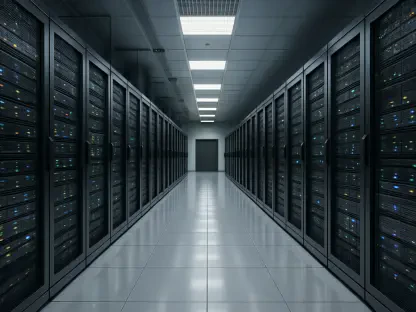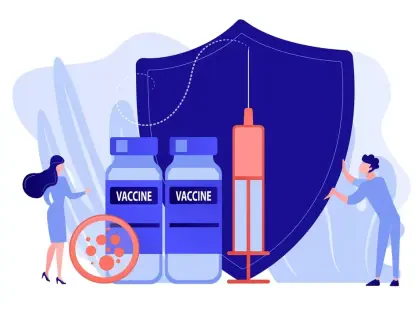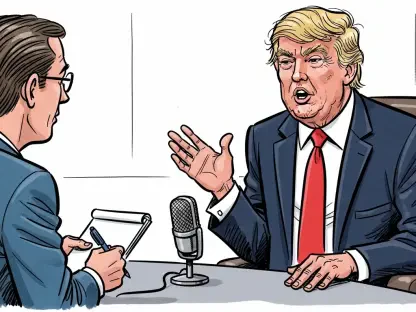In the heart of the American Midwest, rural communities that have long been strongholds of Republican support are grappling with a troubling economic paradox that threatens their future. Despite the promise of revitalization through massive manufacturing investments, such as a $3.5 billion electric vehicle battery plant in Jeffersonville, Ohio, new federal policies are casting a dark shadow over these prospects. Tariffs imposed by the Trump administration, along with other regulatory shifts, are stirring anxiety among residents and industry leaders alike, threatening to derail job creation and economic stability in regions heavily reliant on global partnerships. This report delves into the intricate dynamics of these policies, exploring how they are reshaping the economic landscape of the Republican heartland and what lies ahead for these manufacturing-dependent towns.
Overview of Economic Landscape in Republican Heartland
The rural Midwest, often referred to as America’s industrial backbone, thrives on a foundation of manufacturing and agriculture, with small towns serving as critical hubs for multinational investments. These communities, spanning states like Ohio, Kentucky, and Indiana, have historically depended on factory jobs to sustain local economies, with industries such as automotive and energy production playing pivotal roles. The presence of major corporations, including LG Energy Solution, Honda, Toyota, and Stellantis, underscores the region’s integration into global supply chains, making federal policies a significant determinant of local prosperity.
Jeffersonville, Ohio, a town of just 1,200 residents near Columbus, exemplifies the potential for transformation through industrial projects. A joint venture between LG Energy Solution and Honda to build an electric vehicle battery plant promises to create over 2,000 jobs, offering a lifeline to a community eager for growth. Similar initiatives across the region signal a shift toward clean energy and advanced manufacturing, positioning these towns as key players in emerging sectors.
Yet, the reliance on federal incentives and international partnerships leaves these economies vulnerable to policy changes. The interplay between local aspirations and national regulations shapes the trajectory of growth, with state governments and corporate stakeholders navigating a complex landscape to secure investments. Understanding this delicate balance is essential to grasping the broader economic challenges facing the Republican heartland today.
Impact of Trump Tariffs on Rural Economies
Key Policy Shifts and Local Reactions
The Trump administration’s tariffs on imported goods, coupled with the termination of clean vehicle tax credits, have introduced significant uncertainty into rural Midwest economies. These policies, aimed at bolstering domestic production, have instead sparked fears of disrupted investments in towns like Jeffersonville, Ohio, where the LG-Honda plant’s progress hangs in the balance. Local leaders and residents express a mix of cautious optimism for job creation and deep concern over potential economic setbacks.
In Georgetown, Kentucky, home to a sprawling Toyota facility, the community is wrestling with the immediate implications of these federal shifts. While some residents hope for a resurgence of American-made goods, others worry that stalled projects and reduced incentives for clean energy will hinder long-term growth. The sentiment reflects a broader unease across the region, where economic revitalization is often tied to multinational cooperation.
Additionally, immigration enforcement actions, such as a recent ICE operation in Ellabell, Georgia, have heightened tensions. The raid, targeting a Hyundai-LG plant, has reverberated through similar communities, raising alarms about workforce stability and deterring international firms from further investment. This confluence of policies has left rural towns navigating an unpredictable economic terrain, with local reactions ranging from frustration to guarded hope.
Economic Data and Future Projections
Financial data paints a stark picture of the tariffs’ impact on major corporations operating in the Midwest. Toyota, a cornerstone of Kentucky’s economy, estimates a staggering $9.5 billion loss due to increased costs on imported components, while Stellantis has already announced 900 job cuts in response to similar pressures. These figures highlight the ripple effects on rural communities, where factory employment often accounts for a significant share of local jobs.
Economist Michael Hicks from Ball State University warns of deeper systemic risks, predicting that tariffs could exacerbate financial bubbles in Midwest counties, where manufacturing constitutes around 30% of employment. His analysis suggests that short-term disruptions may lead to prolonged downturns if investments are curtailed, threatening the economic fabric of these regions over the next few years.
Looking ahead, projections indicate a challenging path for job growth and stability unless policy adjustments are made. From this year through 2027, experts anticipate a potential slowdown in industrial expansion if tariffs and related measures persist without mitigation. The data underscores the urgent need for strategies that balance protectionist goals with the realities of globalized manufacturing in these heartland economies.
Challenges Facing Manufacturing-Dependent Communities
The rural Midwest faces formidable obstacles as federal policy shifts disrupt the momentum of industrial investments. Tariffs and the rollback of clean energy incentives have directly impacted projects like the Jeffersonville battery plant, with fears of construction delays and reduced funding casting doubt on promised job numbers. Such interruptions threaten to leave communities with unfinished infrastructure and unmet economic expectations.
Market-driven challenges compound these issues, as multinational corporations adjust to heightened costs and regulatory uncertainty. The risk of layoffs and operational slowdowns looms large at plants across the region, with smaller suppliers particularly vulnerable to sudden shifts in corporate strategy. This volatility undermines the stability that manufacturing towns rely on for sustained growth and community development.
To address these risks, local advocacy for policy recalibration has gained traction, with community leaders urging federal and state officials to reconsider the scope of tariffs. Meanwhile, some corporations are exploring adaptation through increased domestic production, though the feasibility remains uncertain without supportive incentives. These strategies represent a critical effort to safeguard the economic future of manufacturing-dependent areas amid turbulent times.
Policy and Regulatory Environment Under Trump Administration
The Trump administration’s regulatory framework has introduced sweeping changes affecting the Midwest’s industrial landscape, starting with tariffs on imported goods that raise costs for manufacturers. The rollback of Biden-era Inflation Reduction Act incentives further complicates the outlook for clean energy projects, diminishing the appeal of investments in electric vehicle production and related sectors. These shifts have created a challenging environment for compliance and planning.
Multinational companies face significant hurdles in aligning their investment decisions with the new regulatory reality. The increased financial burden from tariffs, combined with uncertainty around workforce stability due to immigration enforcement, has led some firms to reconsider expansion plans in the region. This hesitation directly impacts rural economies that depend on such commitments for job creation and infrastructure growth.
State-level responses add another layer of complexity, with figures like Kentucky Governor Andy Beshear criticizing the tariffs as chaotic and detrimental to local stability. His stance reflects broader concerns about the long-term implications of federal policies on economic development practices in the heartland. The tension between national objectives and regional needs continues to shape the policy discourse, with significant consequences for rural communities.
Future Outlook for Midwest Economic Development
As the rural Midwest navigates the fallout from Trump administration policies, the trajectory of economic development remains uncertain, with tariffs and immigration crackdowns acting as major disruptors. These measures could stifle the growth of key industries, particularly if multinational firms scale back operations in response to heightened costs and risks. The potential for stalled projects looms as a persistent threat to local aspirations.
On the other hand, some optimists see opportunities for domestic production to fill the gap left by reduced imports, envisioning a shift toward self-reliance in manufacturing. Companies like Toyota have signaled plans for further U.S. expansion, which could bolster local economies if supported by favorable conditions. Yet, cautionary tales like the unfulfilled Foxconn project in Wisconsin serve as reminders of the risks when economic promises fail to materialize.
Several factors will influence this outlook, including global economic trends, advancements in manufacturing technology, and evolving political sentiments among rural voters. The interplay of these elements will determine whether the Midwest can adapt to policy challenges or face prolonged economic strain. Close monitoring of both local initiatives and international dynamics will be crucial in shaping a resilient future for the region.
Conclusion and Economic Prospects
Reflecting on the insights gathered, it became evident that the economic anxiety sparked by Trump tariffs and related policies had deeply unsettled Republican heartland communities. The tension between immediate disruptions and the potential for long-term benefits through domestic-focused strategies had left residents and industry stakeholders in a state of cautious apprehension. The data and local sentiments analyzed had painted a picture of vulnerability, with manufacturing towns at a critical juncture.
Moving forward, actionable steps emerged as a priority for mitigating these challenges. Policymakers were urged to consider targeted exemptions or phased tariff implementations to lessen the burden on multinational partnerships vital to rural economies. Local stakeholders had advocated for stronger state-federal collaboration to reinstate incentives for clean energy, ensuring projects like battery plants could proceed without delay. Additionally, fostering dialogue with corporations to address workforce stability concerns tied to immigration policies had been identified as a key area for progress, aiming to rebuild confidence in the region’s investment potential. These measures, if pursued, held the promise of steering the Midwest toward sustainable growth despite the turbulent policy landscape.









